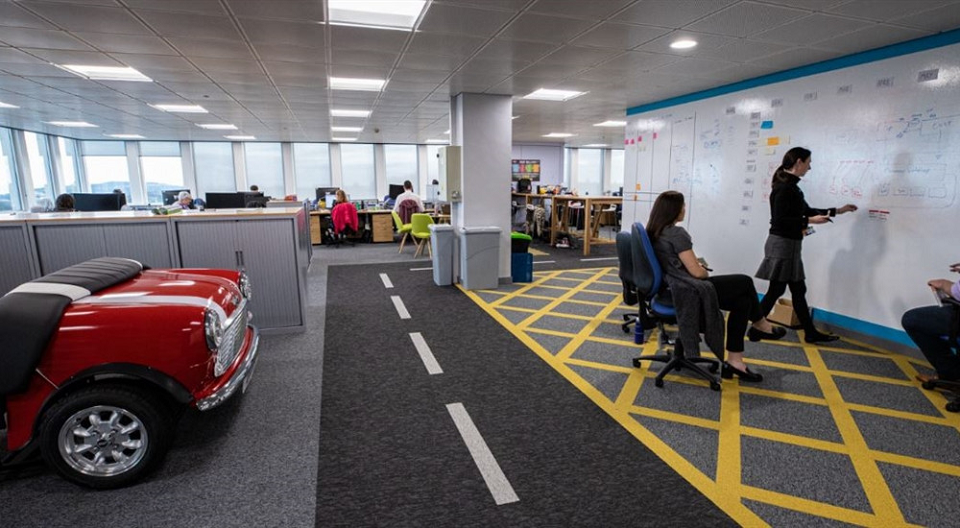Restrictions on household gatherings to continue in parts of North West, West Yorkshire, East Lancashire and Leicester
- Casinos, skating rinks, bowling alleys, exhibition halls, conference centres and indoor play areas will not be permitted to open in these areas
- Government to work with local leaders in Blackburn with Darwen, Oldham and Pendle to address high or rising cases
The current rules on social gatherings will continue in parts of the North West, West Yorkshire, East Lancashire and Leicester following consideration of all local restrictions yesterday by government and local authorities. The measures were announced 2 weeks ago to urgently tackle an increase in COVID-19 cases in these areas.
The latest evidence does not show a decrease in the number of cases per 100,000 people in the area, and the Health Secretary, in collaboration with local leaders, has agreed that the rules must remain in place at present. This will help protect local residents, and allow more time for the changes to have an effect, cutting transmission among households.
The latest data also shows a continued rise in cases in Oldham and Pendle while numbers remain high in Blackburn with Darwen. Local leaders are now setting up an enhanced incident team to try and bring infection rates under control, with support offered from the government. Progress will be assessed throughout the weekend and early next week.
Minister for Health Edward Argar said:
I’d like to thank everyone in Greater Manchester, West Yorkshire, East Lancashire and Leicester for your continued patience in following these vital rules – I know it hasn’t been easy.
We will review the measures again next week as part of our ongoing surveillance and monitoring of the latest data.
It is essential we all remain vigilant, and I urge everyone in these areas to follow the rules – wash your hands regularly, follow social distancing, get yourself a free test as soon as you get any symptoms, and isolate if NHS Test and Trace tells you to.
We will keep all local restrictions under constant consideration, including ahead of any formal reviews. As part of ensuring a proportionate yet robust response to the virus, where possible, the government will remove individual areas from these measures while maintaining or even strengthening measures in others as necessary – just as has been done in other areas where local measures have been brought in, such as Leicestershire.
The ban on indoor gathering continues to apply to:
- Greater Manchester:
- City of Manchester
- Trafford
- Stockport
- Oldham
- Bury
- Wigan
- Bolton
- Tameside
- Rochdale
- Salford
- Lancashire:
- Blackburn with Darwen
- Burnley
- Hyndburn
- Pendle
- Rossendale
- Preston
- West Yorkshire:
- Bradford
- Calderdale
- Kirklees
- Leicester
This means that people in these areas will continue to not be permitted to mix with other households (apart from those in their support bubble) within private homes or gardens. People are still able to meet others in groups up to 6 individuals, or 2 households, in outdoor public places.
Indoor swimming pools, gyms and other leisure facilities will continue to remain closed in Bradford, Blackburn with Darwen and Leicester. Venues and settings that are currently open will remain so, however the additional easements planned nationally for the 15th August will not be coming into place in these settings. Shielding will also continue for individuals in Blackburn with Darwen, and Leicester City.
The national easing of restrictions planned tomorrow around the reopening of venues including casinos, bowling alleys and conference halls will not apply to Greater Manchester, West Yorkshire, East Lancashire or Leicester. The latest data for Leicester shows that infection rates have declined thanks to the efforts of the local area, so a further review is being carried out and an update will be given early next week. In the meantime the current restrictions will remain in place.
PHE’s weekly surveillance report includes changes to the watch list of Local Authority areas with higher than average incidences of COVID-19. The changes are:
- Newark and Sherwood added as ‘areas of concern’
- Eden is being removed, thanks to a drop in cases
See the full surveillance report which includes this week’s watchlist and what the different categorisations mean.
Anyone with any symptoms must isolate immediately and get a test for free by going online or ringing 119. Everyone must continue to socially distance and regularly wash their hands to help bring this virus down further so all areas can return to normal as soon as possible.
Full guidance has been published on gov.uk/DHSC
The 3 definitions for the Joint Biosecurity Centre (JBC), NHS Test and Trace and PHE’s watchlist are:
- areas of concern
- areas of enhanced support
- areas of intervention
For ‘areas of concern’, upper tier local authorities will work with partners, supported by regional PHE and NHS Test and Trace resource, to take additional actions to manage outbreaks and reduce community spread of the virus to more normal levels. Actions taken may include additional targeted testing at high risk areas or groups, for example care homes, enhanced communications around the importance of social distancing, hand hygiene and other preventative measures, and more detailed epidemiological work to understand where clusters of the virus are occurring so that appropriate action can be taken.
On top of this, areas deemed for ‘enhanced support’ will be provided with increased national support, capacity and oversight, including additional resources deployed to augment the local teams where this is necessary. Actions taken may include significant additional widespread testing deployed to the upper tier local authorities, national support for local recommendations put in place to manage outbreaks, and detailed engagement with high risk groups and sectors to help increase the effectiveness of testing and tracing in these areas.
In addition, ‘areas of intervention’ are defined where there is divergence from the lockdown measures in place in the rest of England because of the significance of the spread of COVID-19. There are a range of non-pharmaceutical interventions available to local and national leaders, from extensive communications, expanded testing, to restrictions on businesses and gatherings
See the Contain Framework for more information.
The easements planned nationally on 15 August will not apply to Leicester, Greater Manchester, West Yorkshire and East Lancashire. In proposed regulations, these are opening casinos, bowling alleys, skating rinks, exhibitions halls and conference centres, with guidance on restarting indoor theatrical/concert performances, pilots for large crowds in sports and business events, enabling remaining close contact services to resume (for example certain procedures in beauty salons), reopening steam rooms and saunas, allowing wedding receptions for up to 30 people.
Venues and settings that are currently open in Greater Manchester will continue to do so however additional easements will not be coming into place.
People in Leicester should only socialise in outside public places (like parks) in groups of up to 6 people from multiple households. Gatherings larger than 6 should only take place if everyone is exclusively from 2 households or support bubbles and must not exceed 30 people.

